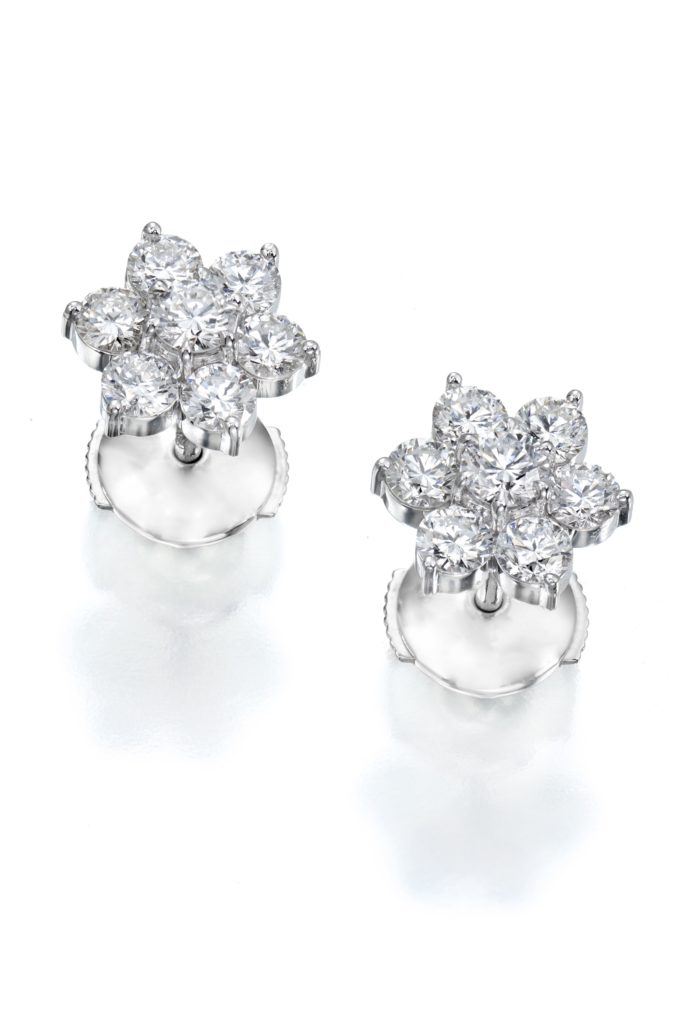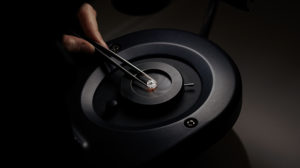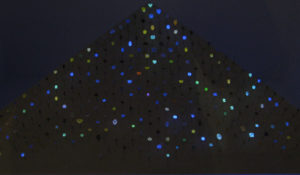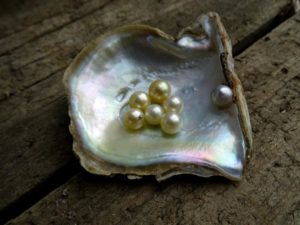
Golden Inspiration
The softest of all the precious metals & originally coveted for its shiny, golden color has paradoxically, throughout its rich history had the strongest hold on the human imagination
Home » Diamond Grading
Essentially, diamonds are graded according to the four Cs: carat, clarity, color and cut. Other characteristics are also considered, including shape and light performance.
The carat weight is a measure of the diamond’s mass, with one carat being defined as 200 milligrams.

The point unit, which equals 0.01 carat, or 2 milligrams, is commonly used for diamonds that weigh less than one carat. All else being equal, the price per carat increases with carat weight, since larger diamonds are both rarer and more desirable for use as gemstones. However, the price per carat does not increase linearly with increasing size, but rather fluctuates around milestone carat weights, as demand is much higher for diamonds weighing just more than a particular milestone than for those weighing just less. For example, a 0.95 carat diamond may have a significantly lower price per carat than a comparable 1.05 carat diamond, because the latter is in higher demand.Total carat weight (t.c.w.) is a measure of the total mass of diamonds or other gemstones in a piece of jewelry. Diamond solitaire earrings, for example, are usually quoted in t.c.w. when they go up for sale, indicating the mass of the diamonds in both earrings and not each individual diamond. T.c.w. is also widely used for diamond necklaces, bracelets and other similar jewelry pieces.
Clarity, on a scale of flawless to imperfect, is a measure of the internal defects of a diamond, called inclusions. Inclusions can be crystals of another diamond or of foreign material, or they can refer to structural imperfections, such as tiny cracks, that can appear whitish or cloudy. The number, size, color, relative location, orientation, and visibility of inclusions can all affect the relative clarity of a diamond. Clarity is graded according to the inclusions that can be seen under a microscope at 10X magnification. Only about 20% of all diamonds mined have a clarity rating that is high enough for use as a gemstone: the other 80% are relegated to industrial use, because most inclusions do not affect the diamond’s performance or structural integrity. Of the top 20% used for jewelry, a significant portion contains one or more visible inclusions, which can be hidden later on by selecting an appropriate setting for the piece. However, large clouds can affect the diamond’s light-scattering and transmission abilities. Moreover, large cracks that are close to or breaking the surface can weaken the stone. Consequently, those diamonds that do not have a visible inclusion, known as “eye-clean”, are preferred by most buyers.
The Gemological Institute of America (GIA) uses a benchmark set of natural diamonds of known color grade, along with standardized and carefully controlled lighting conditions, to grade diamonds for color. The finest quality in color grading is D, meaning a diamond that is totally colorless: a chemically pure and structurally perfect diamond is perfectly transparent, with no hue, or color. In reality, most gem-sized natural diamonds are imperfect, their color being affected by chemical impurities and/or structural defects. The next grading in diamond quality is E or F, given to diamonds which show very slight traces of color under expert observation, but whose color cannot really be seen when these stones are studded in a piece of jewelry. Diamonds which show very small traces of color to the naked eye are graded G or H. Slightly colored diamonds are graded I through K. However, color in a diamond is not always a bad thing: some colors are very rare in diamonds, making these stones priceless, for example, the blue Hope Diamond. Thus, depending on the hue and intensity of a diamond’s coloration, a diamond’s color can either detract from or enhance its value. Most diamonds used as gemstones are basically transparent with little tint, and these are called white diamonds. The most common impurity, nitrogen, replaces a small proportion of the carbon atoms in a diamond’s structure and causes a yellowish to brownish tint, which lowers the diamond’s value. Thus white diamonds are graded from D to Z (with D being “colorless” and Z having a bright yellow coloration). Generally speaking, diamonds with higher color grades are rarer, in higher demand, and therefore more expensive. Paradoxically however, diamonds with a Z grade (the lowest possible color grade) are also rare, and their bright yellow color is therefore highly valued. Nevertheless, in contrast to yellow or brown hues, diamonds of other colors are more rare and valuable, with the most intense colorations commanding the highest prices. These diamonds are sometimes labeled “fancy” in the diamond industry.
Diamond cutting is the art and science of creating a gem-quality diamond out of mined rough (the diamond in its unadulterated form, collected from the mines). The cut of a diamond describes the way in which the rough stone has been shaped and polished, the quality of workmanship and its finished angles. The diamond’s cut is not to be confused with its shape. There are mathematical guidelines for the angles and length ratios of the cuts that will reflect the maximum amount of light. Round brilliant diamonds, the most common diamond cut, are guided by these specific guidelines, but fancy cut stones cannot follow the mathematical specifics as accurately. In 1919, mathematician and gem enthusiast Marcel Tolkowsky developed the round brilliant cut by calculating the ideal shape to return and scatter light when a diamond is viewed from above.
The modern round brilliant has 57 facets (polished faces): 33 on the crown (the top half), and 24 on the pavilion (the lower half). The girdle is the thin middle part of the stone. The function of the crown is to diffuse light into various colors and the pavilion’s function is to reflect light back through the top of the diamond. The culet is the tiny point or facet at the bottom of the diamond that prevents the diamond from chipping in its setting. The culet should be as small as possible, about 1-2% of the diamond’s overall diameter, so that light will not escape from the bottom. The further the diamond’s characteristics are from the Tolkowsky ideal, the less light will be reflected.
However, today, because we consider carat weight to be the most important factor in a diamond, many diamonds are purposely cut poorly to increase carat weight. There is a financial premium for a diamond that weighs the magical 1.0 carat (200 mg), so the girdle is often made thicker or the depth increased. However, neither of these “tricks” make the diamond appear any larger, and both greatly reduce its sparkle The depth percentage is the overall quickest indication of the quality of the cut of a round brilliant.
“Ideal” round brilliant diamonds should not have a depth percentage greater than 62.5%. Another quick indication is the overall diameter. Typically a round brilliant 1.0 carat diamond should have a diameter of about 6.5 mm. However, ideal cuts can be controversial as the definitions of brilliance and beauty are very subjective. New diamond cuts are now all the rage in the diamond industry, for example a design invented in 2003 called the Genesis cut. This cut differs in shape from the more traditional cuts in its concave surfaces and angles, resembling a four-pointed star.
Diamonds are cut into a variety of shapes that are generally designed to accentuate the characteristic fire and brilliance (luster) that diamond gemstones are known for. As already mentioned, fancy cuts do not adhere as accurately to the mathematical rules guiding the round brilliant cut, and they are therefore not held to the same strict standards. The shapes of the fancy cuts are strongly influenced by fashion: the baguette cut (shaped like a loaf of French bread), which downplays the diamond’s fire and accentuates its luster, was popular during the Art Deco period. The princess cut (square outline), which accentuates the stone’s fire rather than its luster, is more popular today: this cut is also preferred among diamond cutters because it wastes the least amount of the original crystal. Other popular fancy cuts include the marquise, heart, briolette and pear cuts, and the newer cushion and radiant cuts with rounded edges, as well as the Asscher cuts.
Many of these newer cuts are based on older ones, with some modifications, such as the inclusion of extra facets. These newly developed cuts are viewed by many as more of an attempt at brand differentiation by diamond sellers than actual improvements to the state of the art.
The quality of a diamond’s cut is widely considered the most important factor in its beauty: a well-cut diamond can appear to be of greater carat weight, and to have better clarity and color than it actually does. The diamond’s cut determines its ability to reflect and refract light, but it is a difficult parameter to judge quantitatively, as it depends on a number of factors: proportion, polish, symmetry, and the relative angles of various facets. Facets that are cut only a few degrees out of alignment can result in a poorly performing stone. Then there is the balance between the diamond’s luster and its fire: a diamond cut for too much fire, for example, ends up looking like a cubic zirconia. A well-executed round brilliant cut reflects light upwards and make the diamond appear white when viewed from the top. An inferior cut produces a stone that appears dark at the center and in extreme cases, the setting may be seen through the top of the diamond as shadows. Several different theories on the “ideal” proportions of a diamond advocate a shift away from grading the cut by the use of various angles and proportions toward measuring the performance of the cut stone. The GIA has developed a set of criteria for grading the cut of round brilliant stones, called Facetware, that is now the standard in the diamond industry.
The term light performance is used to describe how well a polished diamond returns light to the viewer, according to three properties: brilliance (luster), fire, and scintillation. Brilliance refers to the white light reflections from the external and internal facet surfaces. Fire refers to the spectral colors which are produced as a result of the diamond dispersing the white light. Scintillation refers to the small flashes of light that are seen when the diamond, light source or viewer moves. The setting in which the diamond is placed also affects the performance of light through it. Prong settings are the most popular setting for diamond jewelry, as they allow the maximum amount of light to enter from all angles, making the diamond appear larger and more brilliant. In bezel settings, the diamond or gemstone is completely surrounded by a rim of metal, with an open or closed back and a molding which can allow more or less light through the stone. Channel settings, most popular in wedding and anniversary bands, set the stones right next to each other with no metal separating them. This type of setting protects the girdle area of the stone.

The softest of all the precious metals & originally coveted for its shiny, golden color has paradoxically, throughout its rich history had the strongest hold on the human imagination

The earliest references to diamonds as gemstones stem from India, dating as far back as the 4th century BC. Buddhist works can be found describing diamonds as well-known precious stones

Essentially, diamonds are graded according to the four Cs: carat, clarity, color and cut. Other characteristics are also considered, including shape and light performance.

Alan Bronstein is a world-renowned gemologist specializing in colored diamonds. Together with his patron and partner Harry Rodman, a retired gold refiner, he has created a unique

The pearl’s attraction is unlike that of any other gem. Its enchantment goes back to ancient times, more than 6,000 years

Native American Jewelry is made by many tribes in North America. Although the materials used by all of them are similar, there are some distinct design features that differentiate them